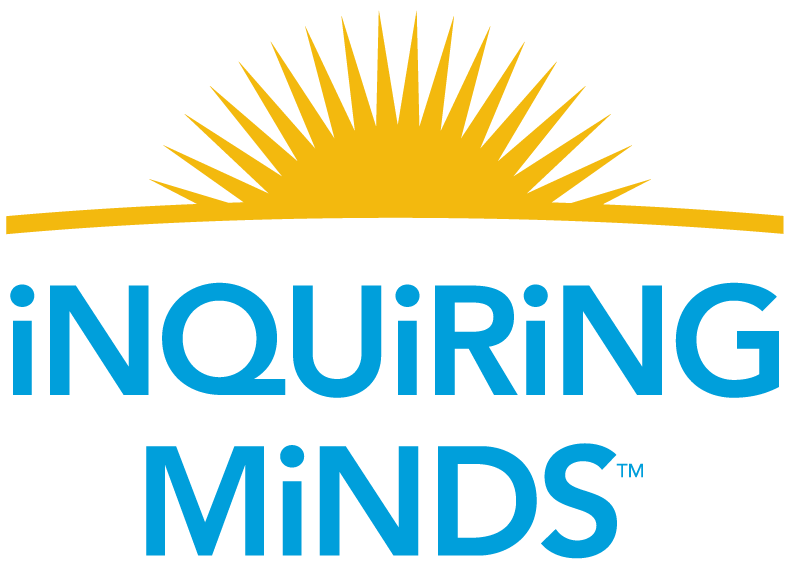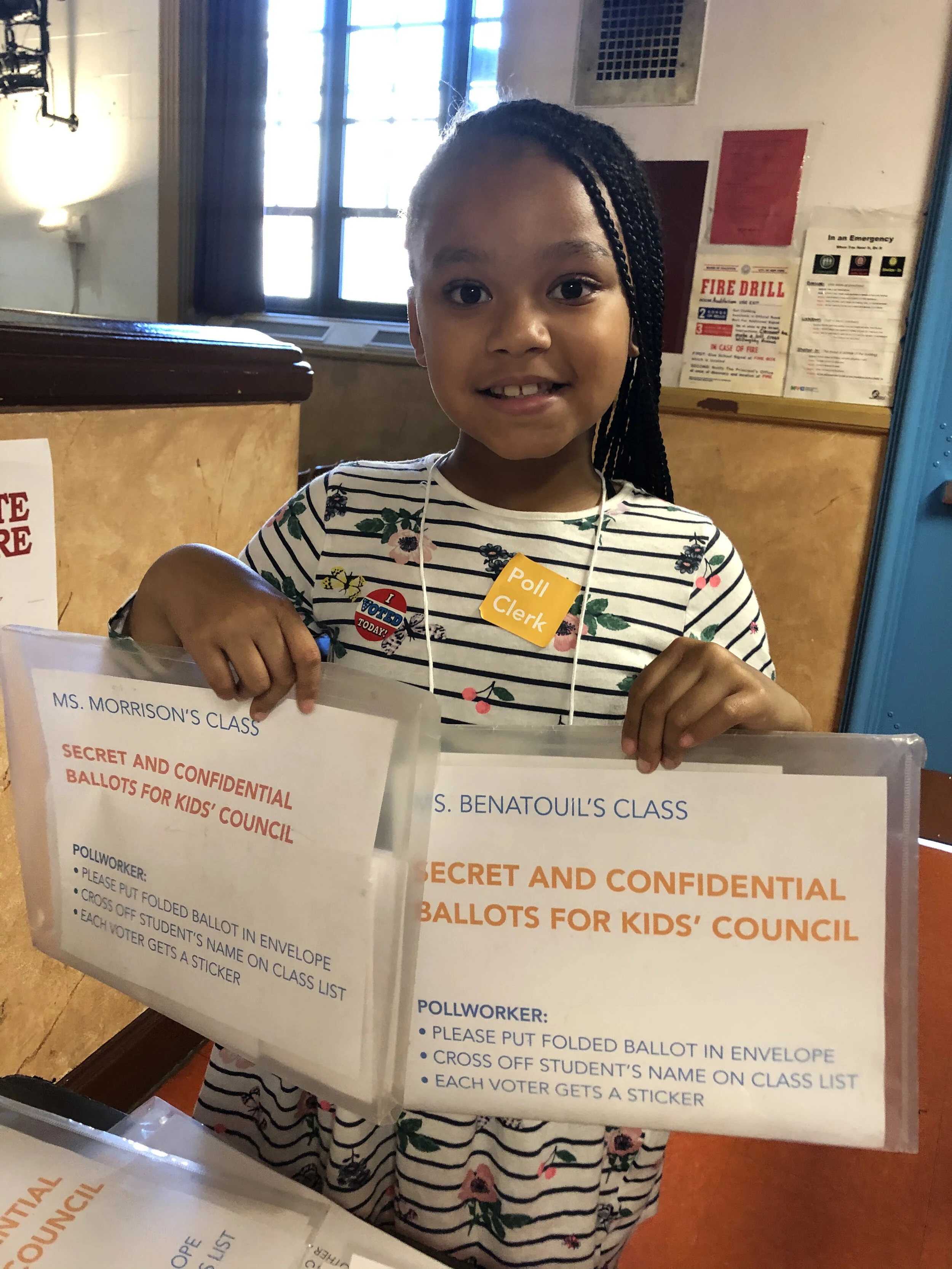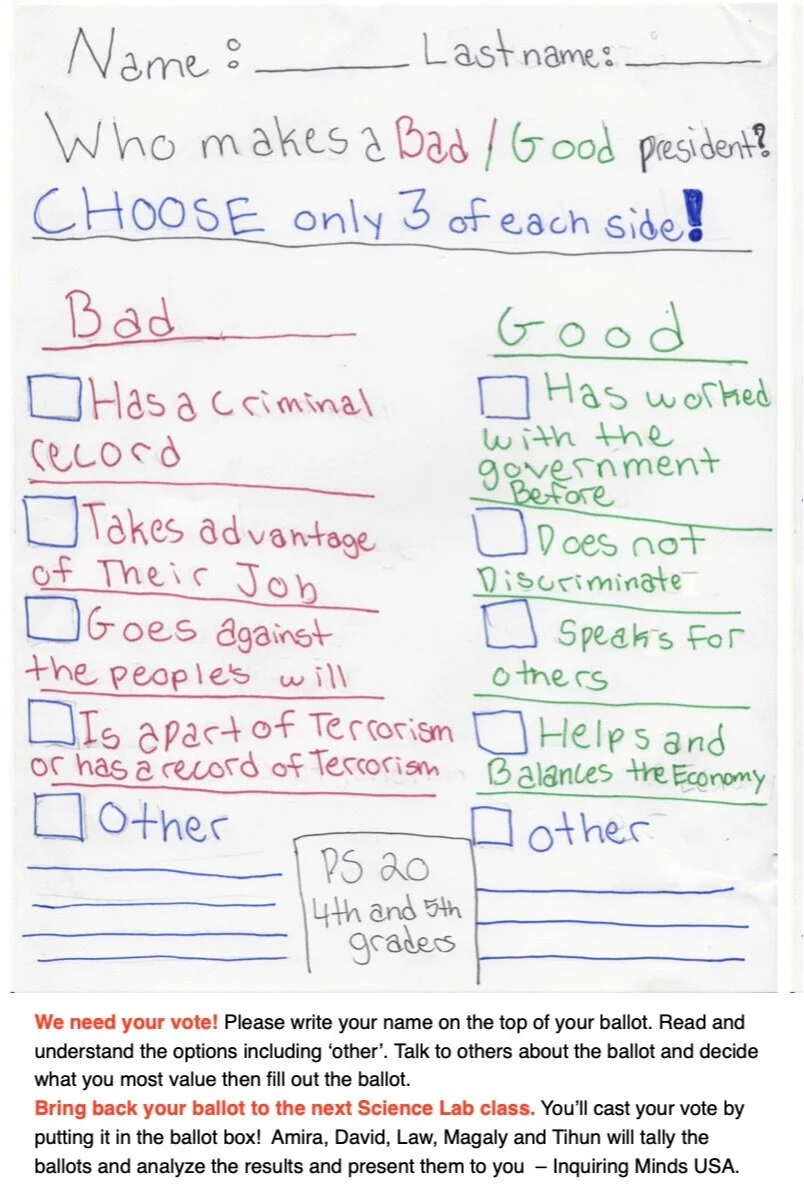Democratic Student government structures in elementary and middle school
When kids learn about civics strong, values and effective organizational structures go hand-in-hand with savvy governance: They will, after all, be part of governance structures of different kinds for the rest of their lives.
Our inquiry structure helps students’ develop a strong civic mindset
Kids have a keen sense of fairness at a very early age. They can develop strong civics-related opinions. They are acutely aware inequity. This this the time for them to develop their values and critical thinking skills,mastered through trial and error.
We developed both Kids’ Council (upper elementary, run by students elected by their peers) and Our Town to help kids pre-K-6 build these mental muscles and, in the process, start to experience the benefits and challenges of good governance in their own lives.
Kids can start to trust that kids - and adults - will truly listen to them and that they can have an impact on their community when they are engaged in civics in school.
Our Town
After years of successfully running Kids’ Councils in 4th and 5th grade classrooms we have expanded our student governance model to a school-wide structure
Our Town is a microcosm of a representative constitutional democracy for the entire elementary school. Just as in Kids’ Council any 4th and 5th grader may run to represent their classrooms (i.e., their neighborhoods) in Our Town they may decide to run as a peacekeeper or judge in classroom elections at the beginning of each year.
The initial task of the first Council is to figure out how the entire school might create a constitution for Our Town.
• Judges uphold the school’s Constitution (developed openly by the whole school), and help make sure the Council is working well when there are ethical challenges.
• The head of the school (ie, the principal) is automatically the mayor and has veto power.
• Peacekeepers help work out disputes peer to peer.
• The Council works on ways to improve the school in accord with the school’s Constitution.
The Council meets weekly, confers with their constituents (in other words, their classmates) and regularly report their plans to their classrooms and at monthly school-wide assemblies. For instance, the Council and Peacekeepers may decide to campaign against bullying. The Peacekeepers can help here. Another example is that the Council may decide to lobby for better a recycling program in the school. The Council may call for the naming the town, the neighborhoods and create signage. The Council may survey students and determine what projects they want to prioritize. Another example is that the Council could ask if students want to run a cooperative store. Or recommend a revision to the homework rule or times of recess or other rules the students decide on to the principal (i.e., the mayor).
Children learn by doing (and from each other)
The collective will of the students’ is also often not known because they are not organized. Primary schools, therefore, have an inherent imbalance of power between the students and the administration. Once organized, they quickly figure out what concerns they share and how to proceed. They also face any barriers and learn how to get around them. When they see progress as a result of their organizing efforts, their civic mindsets grow..
When active learning about democratic governance starts in the early grades, children grow up excited and informed about their role as active citizens.
Why doesn’t this already happen in all schools?
The abilities of 10 year olds are often under appreciated. The role of adults is often over emphasized. The success of Kids’ Councils is that it rebalances these roles by giving children (who are ready to rise to the occasion) a say in the school’s community concerns.
Let’s help shift the power to the little people so we can strengthen our constitutional democracy by growing good citizens.
We are currently organizing a Google folder that will help any school run a Kids’ Council or Our Town program for free. Go to What is Democracy? which is a Kid-led video series we made that explores what makes a healthy democracy tick.
Below is a photo of a Learning Wall created by a PS20 Kids’ Council and a snapshot of how it works to help organize the Council’s focus to be inclusive as it seeks to represent the entire school. For more on Kids’ Council go here.
4th and 5th graders run for Kids’ Council in 2019 at PS20 in Brooklyn, NY using secret ballots. By using Rank Choice Voting any student who wants to run may be included on the ballot.
In October of 2016 Kids’ Council decided to hold a mock presidential election. The Principal requested that the Council not refer to the actual candidates (Hillary Clinton or Donald Trump) so the students decided to make it more general and designed the ballot above.
The final vote tally showed that most students think a good president speaks for all the people and cannot be a criminal.
Students (who were studying climate change in science) added comments showing a big concern about the role the president should take in protecting the environment.



